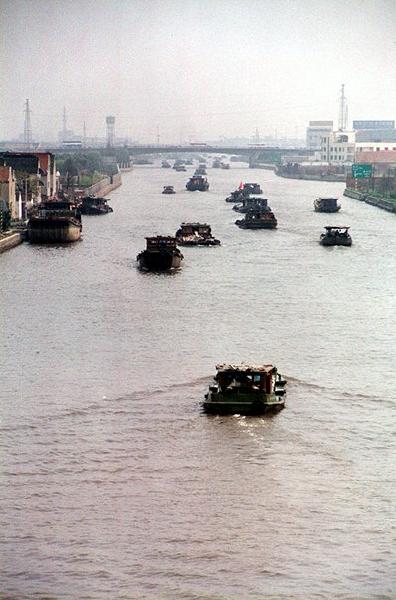Grand Canal
 The Beijing-Hangzhou Grand Canal is one of the greatest projects endeavored in ancient China as well as the longest man-made waterway in world. With a total length of 1,794 kilometers, the canal interconnects the Yangtze, Yellow, Huaihe, Haihe, and Qiantang rivers. It flows through Beijing, Tianjing, Hebei, Shandong, Jiangsu and Zhejiang with Hangzhou at its southernmost end.
The Beijing-Hangzhou Grand Canal is one of the greatest projects endeavored in ancient China as well as the longest man-made waterway in world. With a total length of 1,794 kilometers, the canal interconnects the Yangtze, Yellow, Huaihe, Haihe, and Qiantang rivers. It flows through Beijing, Tianjing, Hebei, Shandong, Jiangsu and Zhejiang with Hangzhou at its southernmost end.
The construction of the Grand Canal started in the 5th century BC at the end of the Spring and Autumn Period (770-476BC), and it underwent two large-scale expansions in the Sui Dynasty (581-618) and the Yuan Dynasty (1271-1368). Before the founding of new China in 1949, only a small section was suitable for navigation. Now 1,000-ton barges can navigate smoothly in more than 400 kilometers in the section of northern Jiangsu Province to reach the Yangtze River and the Huaihe River.
The Grand Canal is composed of the manmade watercourses and some natural rivers and lakes. The whole course can be divided into seven segments, namely the Tonghui River, the North Canal, the South Canal, the Luyun River, the Central Canal, the Liyun River, and the Jiangnan Canal. Since most of China′s major rivers flow from west to east, the Grand Canal, running north and south, provides an important connector between several minor river systems. It is being restored as a water-diversion conduit. It has played an important role in strengthening economic and cultural intercourse between north and south and promoting the development of the country′s economy.
In April 1981, China opened ancient canal tour routes from Wuxi to Yangzhou and Wuxi to Hangzhou, drawing much attention from tourists home and abroad. Tourists can appreciate the beautiful scenery, human cultures, and folk customs in famous cities south of the Yangtze River along the routes.
Source: http://www.chinaculture.org